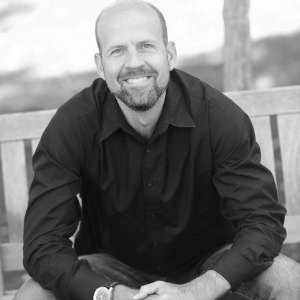- Video Library
- Jonathan Berent, NextSense - NextSense | LSI Europe '22
Jonathan Berent, NextSense - NextSense | LSI Europe '22

Jonathan Berent
Jonathan Berent is the Founder and CEO of NextSense, a health tech company developing brain sensing technologies to help understand and treat neurological diseases and monitor brain health.
Berent believes that further unlocking how the brain works will transform our lives, from health to creativity to even our relationships and understanding of ourselves. He began pursuing his interest in neuroscience after experimenting with polyphasic sleep and becoming fascinated with altered states of consciousness during sleep.
His work in neuroscience also informs his course at Stanford, “Dement's Sleep and Dreams,” which has become one of the University’s most popular classes. In it, Berent offers an industry perspective on the state of the art for consumer sleep tracking devices coupled with a practical lecture on achieving lucidity during dreams.
Before becoming a Director at Google X, Berent held a number of positions at Google, leading large teams of digital marketing specialists focused on customer experience and onboarding. He also previously served as a Senior Director at Oracle. Berent’s 25 year career in technology has ranged from pioneering the first web-based voting system at Stanford University to helping negotiate some of the early Java contracts at Sun Microsystems with IBM, BEA, and Motorola.
Berent has spoken at various conferences such as Chan Zuckerberg BioHub, Stanford Medicine Big Data Health, and the California Sleep Society where he discussed the latest scientific findings for an unusual state of dreaming characterized by increased frontal lobe activity despite being in a classic REM state (more commonly known as lucid dreaming). At Google, he hosted a popular Google Talk on developing an inclusive mindset in the workplace with a world-renowned teacher/wisdom guide, Sadhguru.
Jonathan won a semi-finalist distinction in the annual Faulkner's Society contest for a novel named "Clandestine Games: Junior Recruit"
Jonathan Berent
Jonathan Berent is the Founder and CEO of NextSense, a health tech company developing brain sensing technologies to help understand and treat neurological diseases and monitor brain health.
Berent believes that further unlocking how the brain works will transform our lives, from health to creativity to even our relationships and understanding of ourselves. He began pursuing his interest in neuroscience after experimenting with polyphasic sleep and becoming fascinated with altered states of consciousness during sleep.
His work in neuroscience also informs his course at Stanford, “Dement's Sleep and Dreams,” which has become one of the University’s most popular classes. In it, Berent offers an industry perspective on the state of the art for consumer sleep tracking devices coupled with a practical lecture on achieving lucidity during dreams.
Before becoming a Director at Google X, Berent held a number of positions at Google, leading large teams of digital marketing specialists focused on customer experience and onboarding. He also previously served as a Senior Director at Oracle. Berent’s 25 year career in technology has ranged from pioneering the first web-based voting system at Stanford University to helping negotiate some of the early Java contracts at Sun Microsystems with IBM, BEA, and Motorola.
Berent has spoken at various conferences such as Chan Zuckerberg BioHub, Stanford Medicine Big Data Health, and the California Sleep Society where he discussed the latest scientific findings for an unusual state of dreaming characterized by increased frontal lobe activity despite being in a classic REM state (more commonly known as lucid dreaming). At Google, he hosted a popular Google Talk on developing an inclusive mindset in the workplace with a world-renowned teacher/wisdom guide, Sadhguru.
Jonathan won a semi-finalist distinction in the annual Faulkner's Society contest for a novel named "Clandestine Games: Junior Recruit"

17011 Beach Blvd, Suite 500 Huntington Beach, CA 92647
714-847-3540© 2025 Life Science Intelligence, Inc., All Rights Reserved. | Privacy Policy







